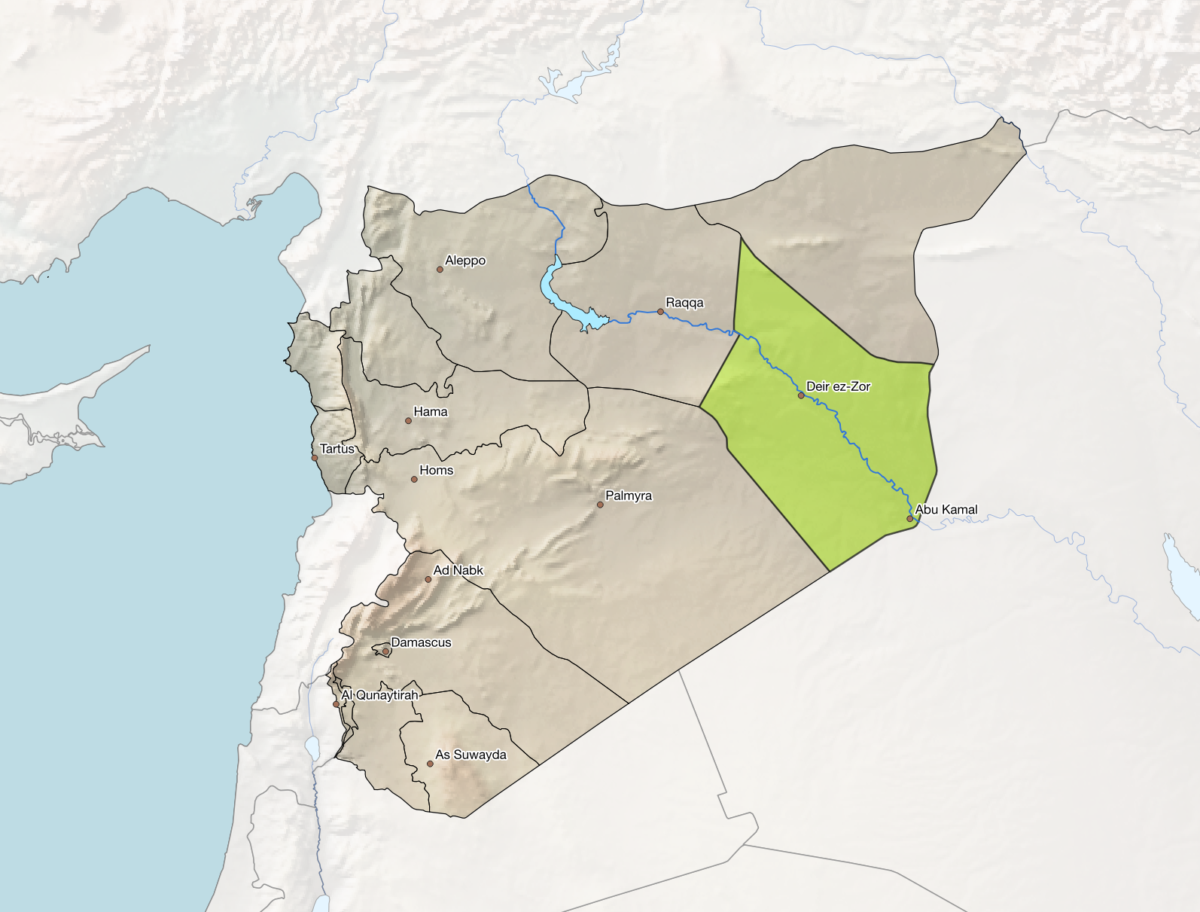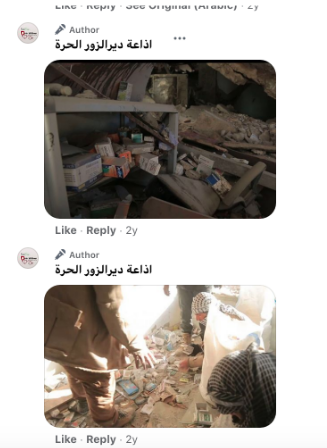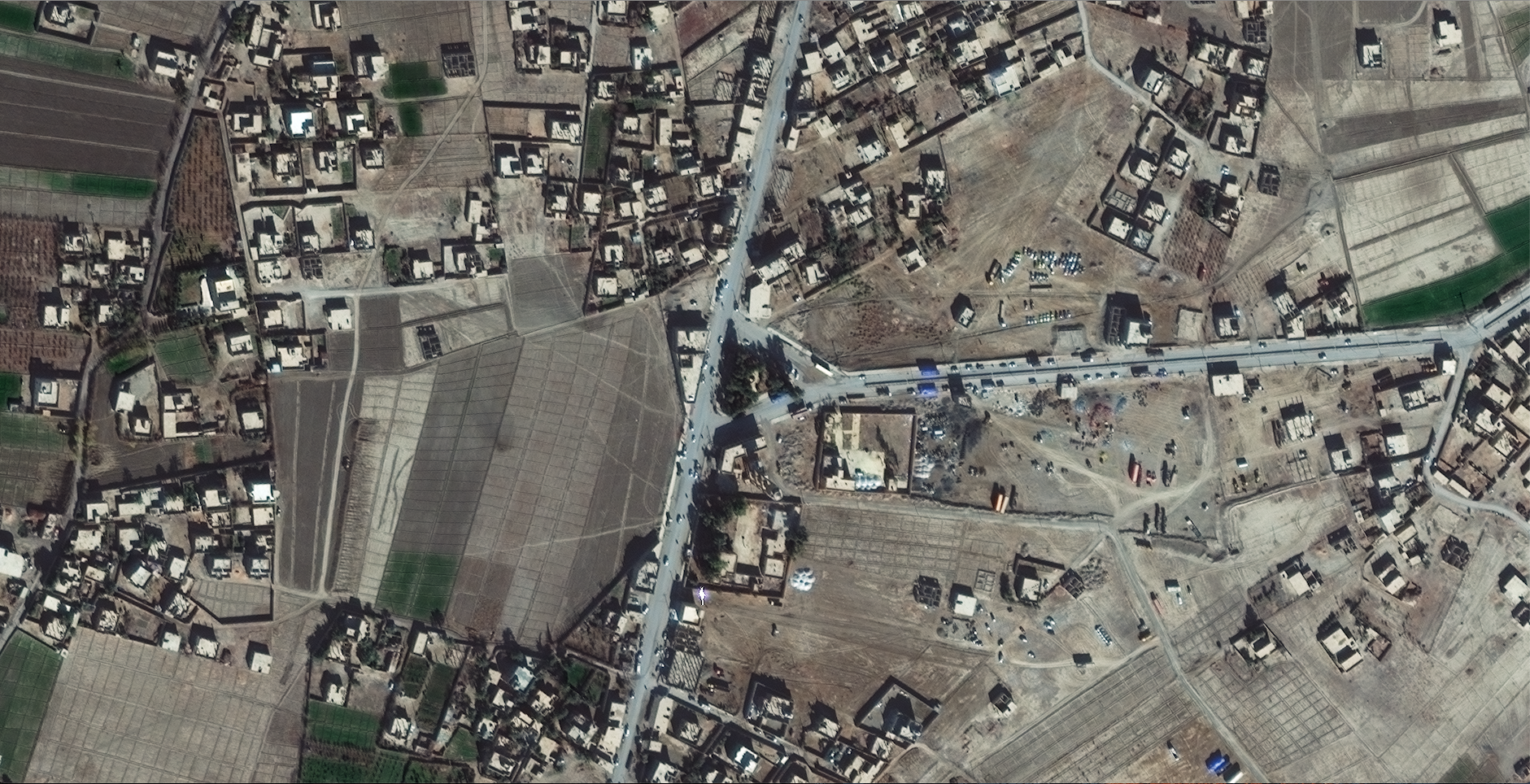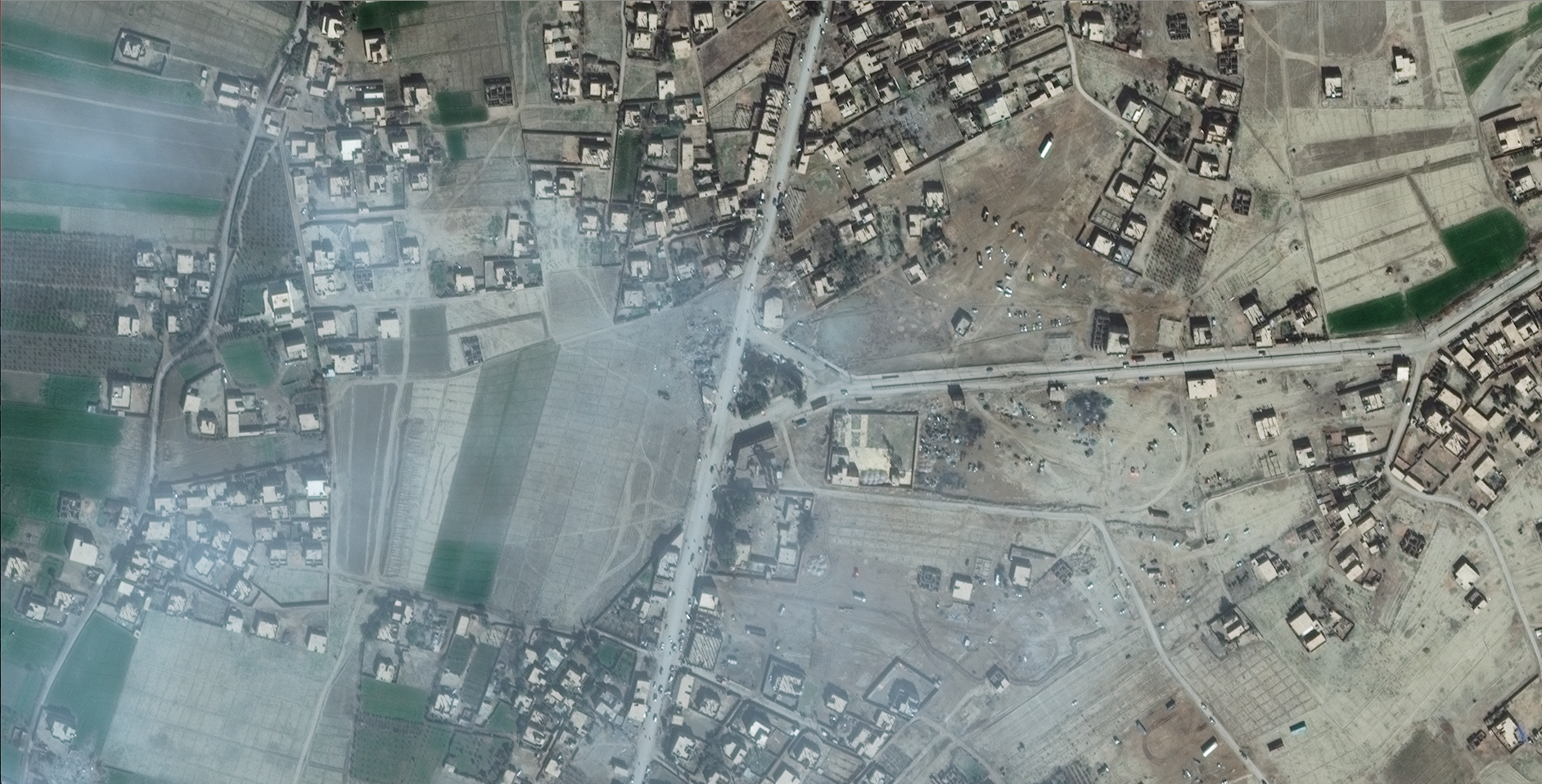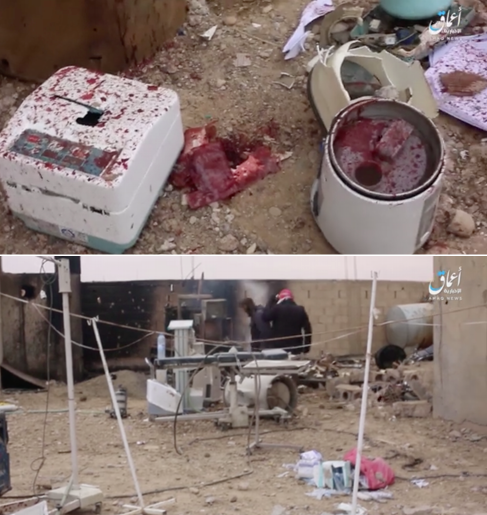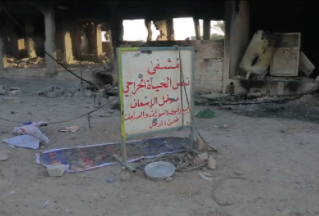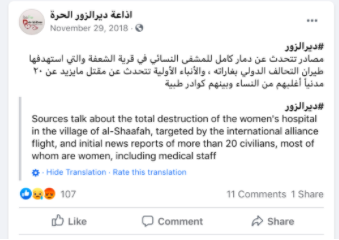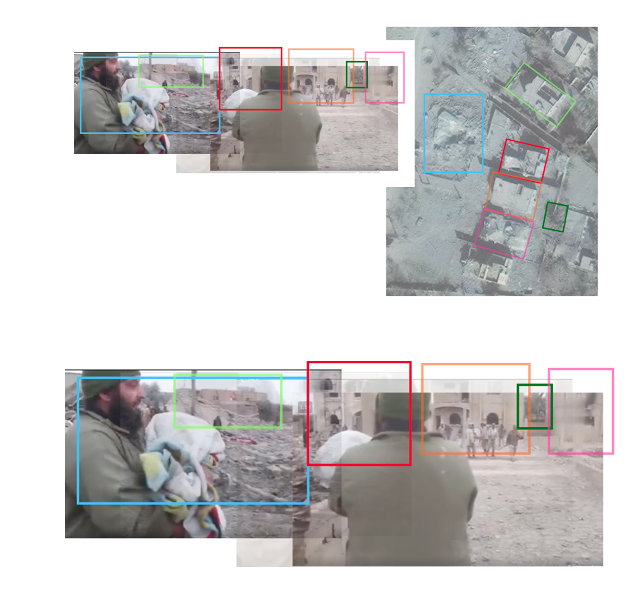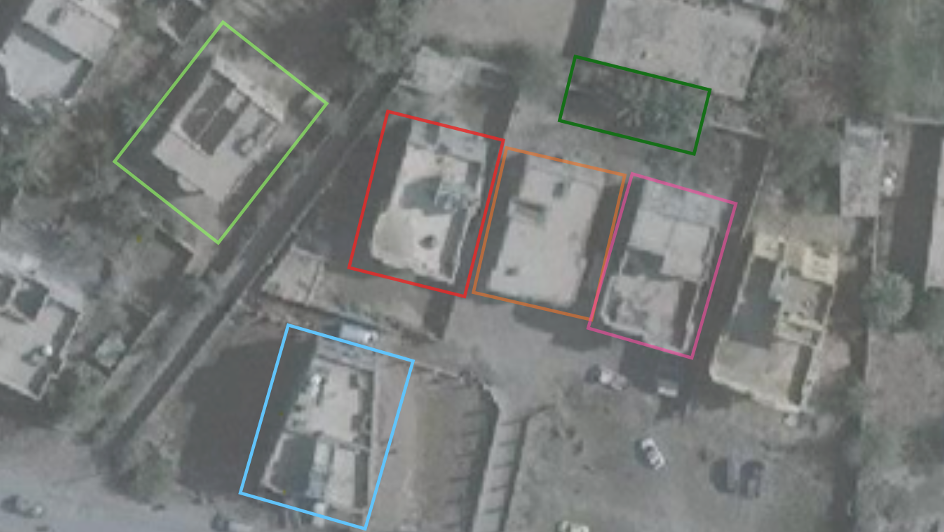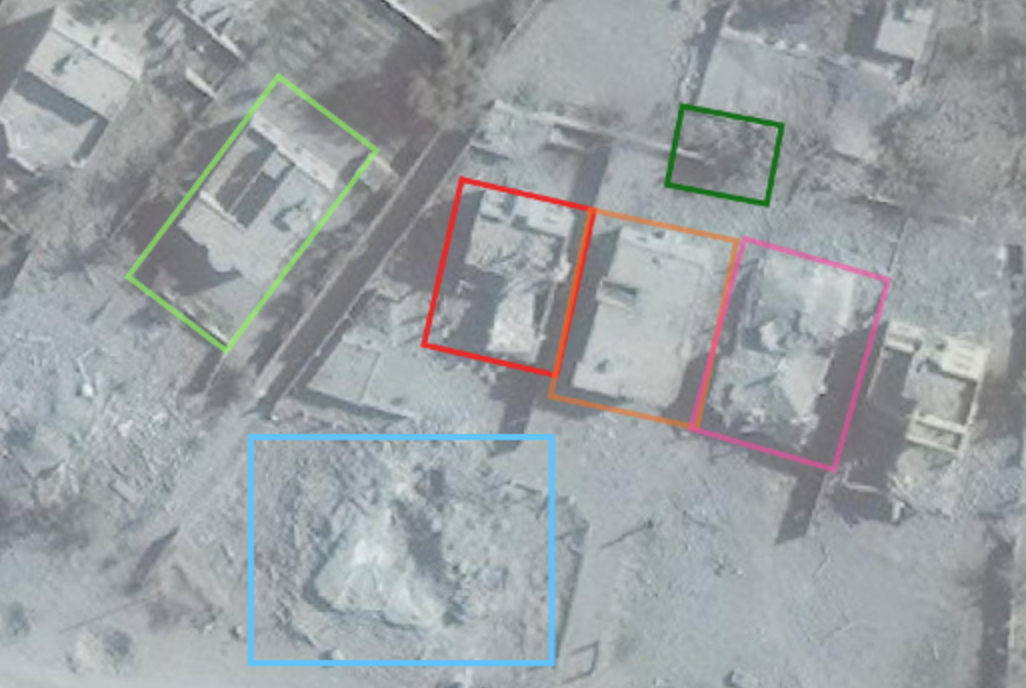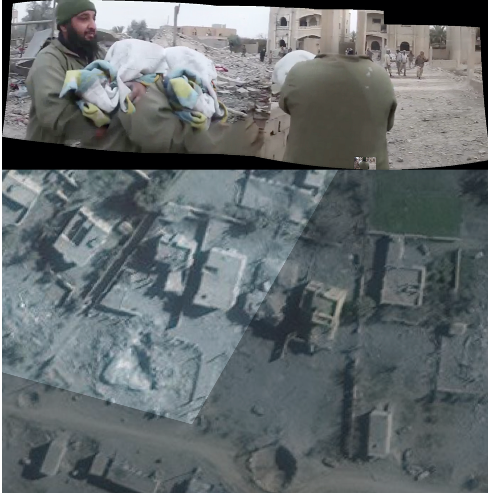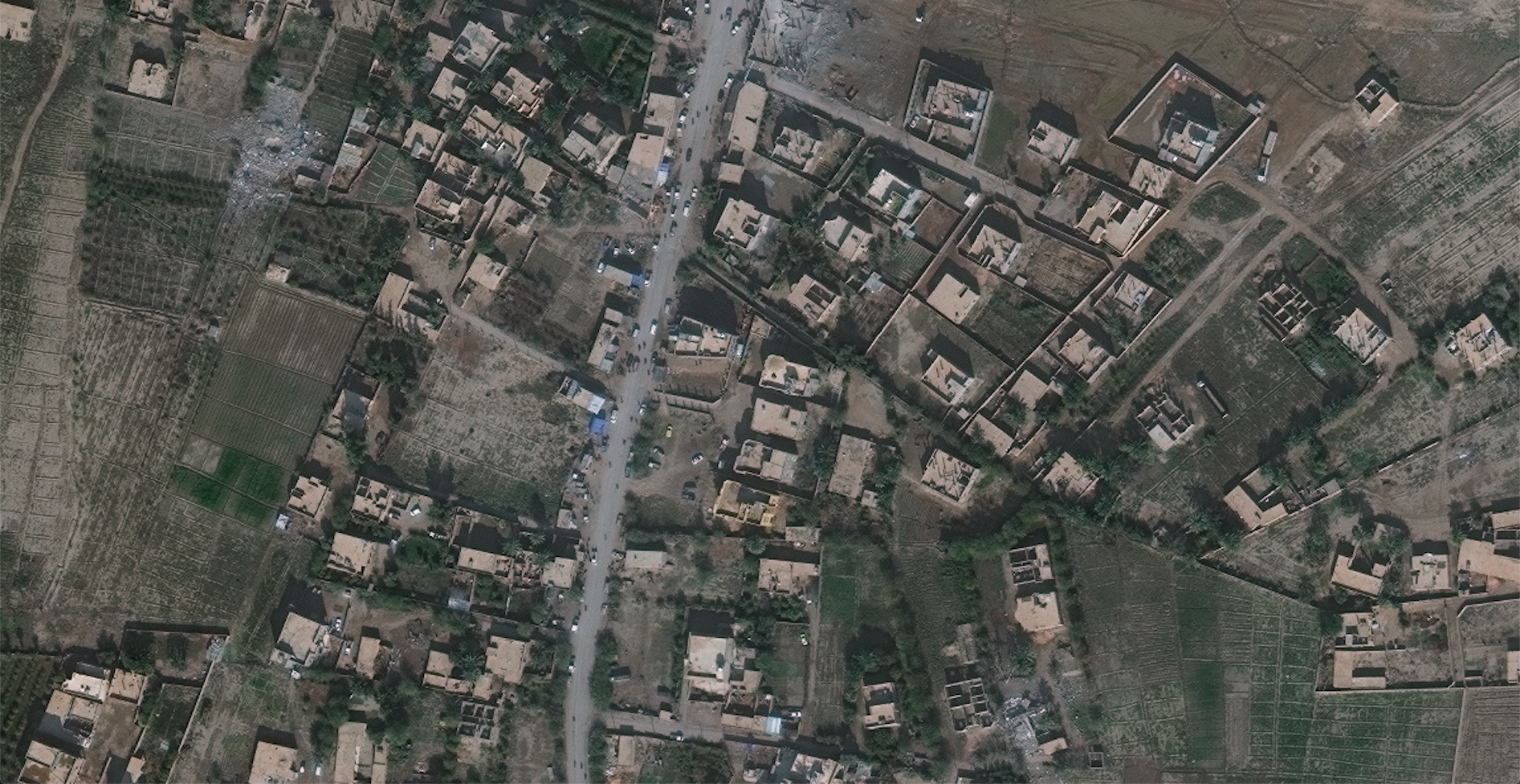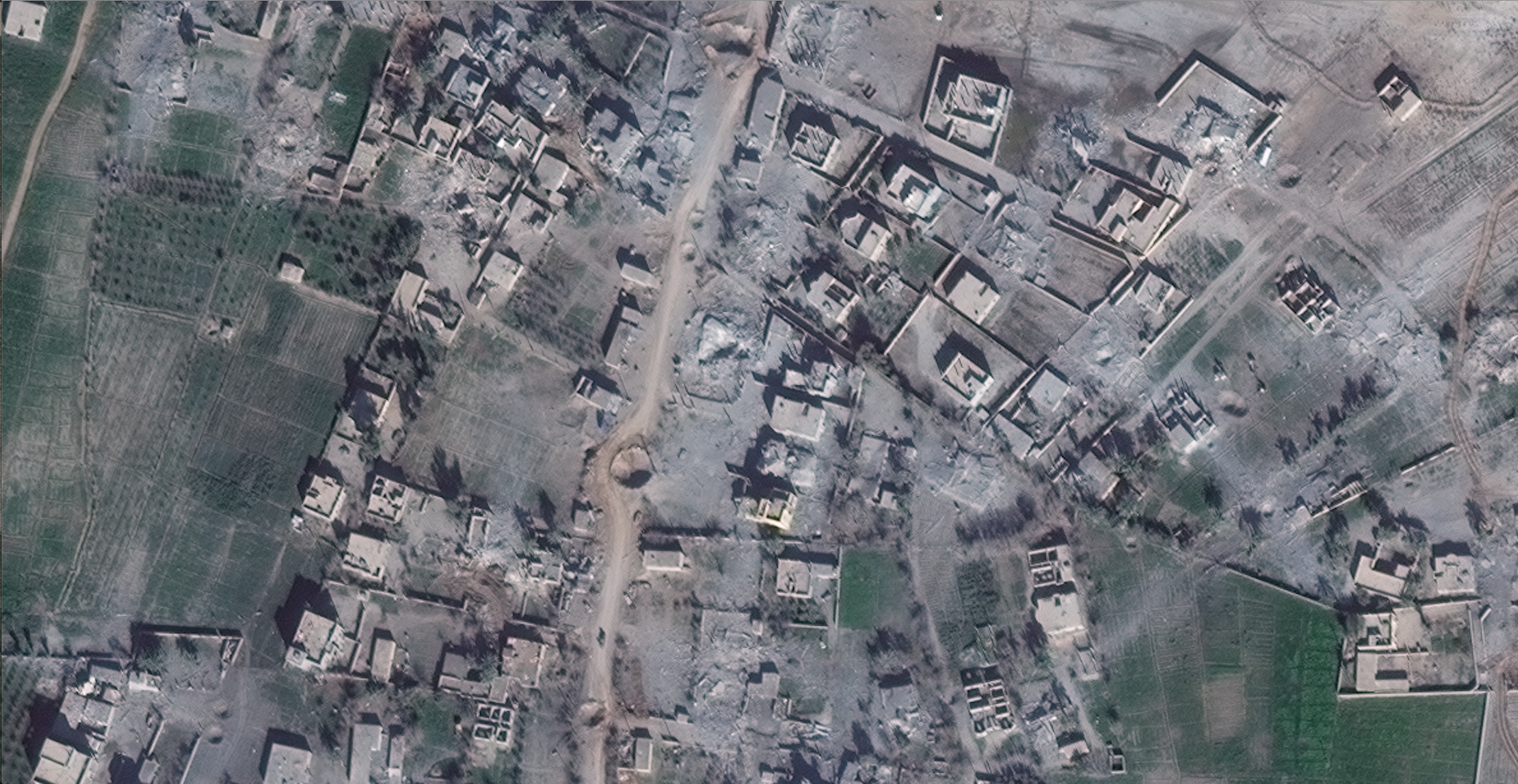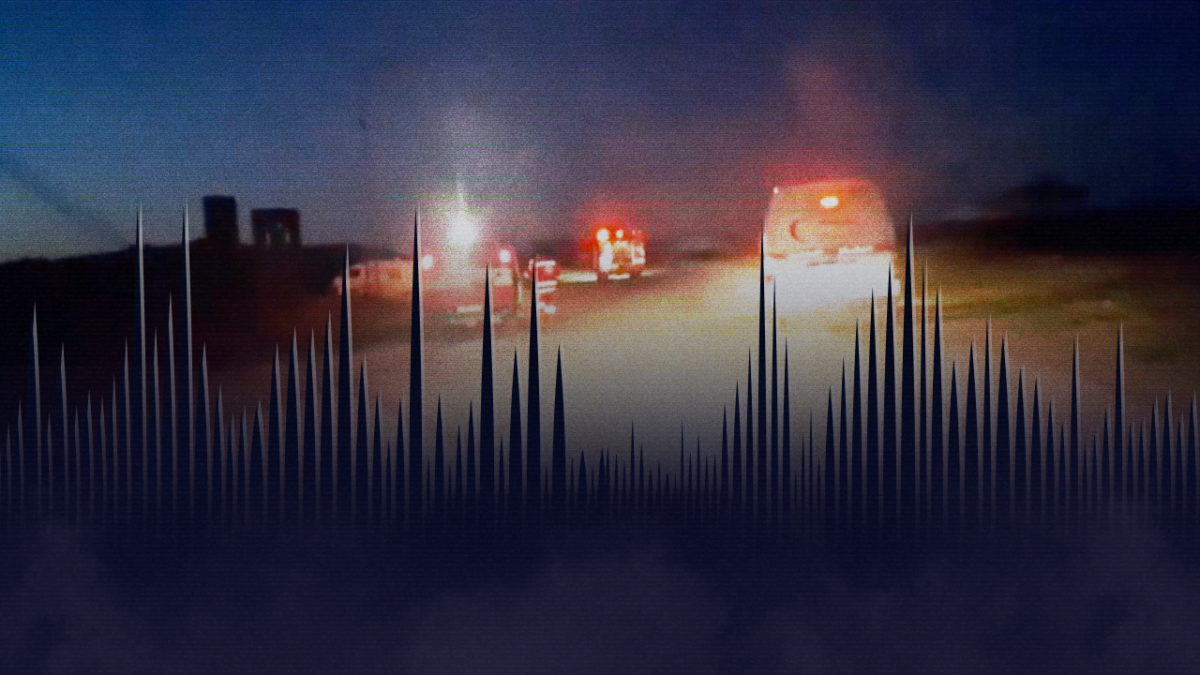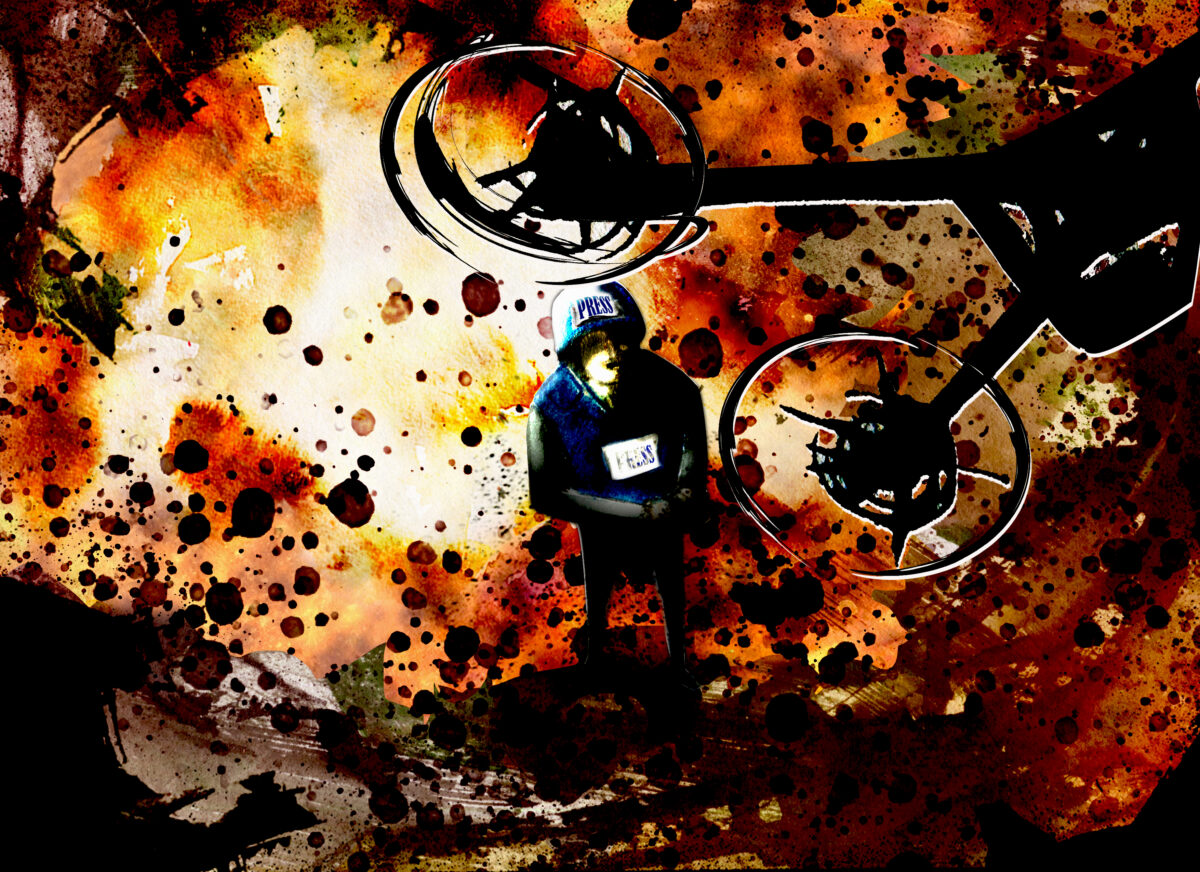Could Coalition Airstrikes Have Hit Medical Facilities in Syria? A Review of Open Source Data
Organizations such as Airwars, a United Kingdom-based nonprofit aimed at tracking casualties in conflicts, have long documented civilian harm in the Syrian civil war.
Amidst the thousands of strike assessments on its website are reports that claim Russian or Syrian regime forces have struck medical facilities over the course of the near decade-long conflict. Other nongovernmental organizations like the Syrian Archive have covered the issue of attacks on Syrian hospitals, too.
Yet Airwars’ incident database also contains several reports that claim that U.S.-led Coalition airstrikes have hit either hospitals or makeshift medical sites in recent years, as well.
While these reports are not conclusive on their own, this investigation seeks to further explore such claims and gather more details about selected alleged strikes.
Using analysis from Airwars, as well as other international monitoring groups, as source data, the authors of this article were able to identify five occasions in 2018 where Coalition airstrikes were reported to have hit either hospitals or makeshift medical facilities in eastern Syria.
Additional open source information, such as satellite data and user-generated content, was then used to glean further evidence as to what had actually occurred.
In times of war, international humanitarian law (IHL) enshrines special protection for civilian healthcare facilities. Under no circumstances can they be attacked if they’re exclusively organized for medical purposes. They may lose special protection only if they are used to commit, outside their humanitarian duties, acts harmful to the enemy. But even then, principles such as proportionality, distinction and precaution, must be respected.
This research is not able to conclude whether or not these laws were violated; it is also not able to speculate on potential motives, strategies, unintentional errors on the part of the Coalition, or confirm if they did indeed strike medical facilities or carry out the strikes in question.
At least three of the medical facilities detailed in the strike data (below) appeared to be makeshift or were operating from within a house or apartment. It was not clear if these had been clearly demarcated, and it is often difficult to ensure such operations are granted the appropriate protections under IHL.
While the data sources point to the U.S.-led Coalition, Russian and Syrian regime forces were active in Deir ez-Zor Governorate in 2018, as well. But neither Russian nor Syrian forces are mentioned in the reports gathered from multiple sources detailing the strikes.
The authors provided dates and coordinates for each of the five strikes to Combined Joint Task Force – Operation Inherent Resolve (CJTF-OIR), the U.S. Department of Defense’s task force that leads its efforts to fight the Islamic State (IS) in Syria and Iraq.
A spokesperson for CJTF-OIR said: “CJTF-OIR reviewed each investigation that was previously conducted in relation to the allegations you cited. It is advised that each allegation was found to be NOT CREDIBLE. This was determined either on the basis that no potentially corroborating CJTF-OIR strikes were carried out on the date and in the geographic area alleged, or on the basis that the allegation provided insufficient information to conduct an assessment of credibility. CJTF-OIR applies a rigorous validation process to ensure all strikes conducted comply with the rules of engagement and International Humanitarian Law. No evidence available to CJTF-OIR suggests that any healthcare facilities were affected by CJTF-OIR strikes on the dates you provided.”
The spokesperson did not provide further details on specifics of the strike investigations mentioned, which they said were not for public release, nor did they provide evidence to back up the conclusion that the strike data detailed was “not credible.”
At least one of the strikes identified by the authors was previously dismissed as non-credible by CJTF-OIR, although few details were provided at the time as to why it had concluded that no civilian casualties occurred.
CJTF-OIR has previously been criticized for undercounting civilian harm relating to airstrikes in Syria. A 2018 report from Amnesty International stated that CJTF-OIR found that allegations of civilian harm were non-credible at a rate of more than 95% for a specific sample of allegations concerning strikes mainly from 2017. Amnesty suggested “that some, possibly many, allegations [might have been] dismissed before all necessary efforts are deployed to investigate them.”
An Airwars report from 2016 also stated that Coalition forces had admitted to having caused an “unprecedentedly low number” of civilian casualties compared to recent airpower conflicts.
Despite this, the reports from local media and monitoring groups detailed below should still be read with informed skepticism until more evidence comes to light, can be gathered on the ground or additional information is released.
Methods
The authors used data from a variety of sources and monitoring groups to compile information about each strike.
In addition to Airwars, the authors used data from sources such as New York-based nonprofit Physicians for Human Rights (PHR) and the Safeguarding Health in Conflict Coalition (SHCC), a group of international NGOs “working to protect health workers, services, and infrastructure.” Insecurity Insight, a Switzerland-based non-political association focused on “research methods to examine threats facing people who live and work in dangerous environments” and an SHCC member, collates the data for SHCC.
Relevant public strike releases from CJTIF-OIR were also consulted and are detailed in relation to each strike below.
Where possible, the strikes were verified using time-stamped satellite imagery, user-generated content posted to social media, and other open source materials. Thirteen strikes — all of which took place between February 2016 and November 2018 — were initially selected for review, as data indicated they may have resulted in Coalition armed forces striking hospitals, clinics, or other medical facilities.
However, the investigation was narrowed to five incidents after evaluating the availability and reliability of the data and evidence. The five strikes took place in 2018 in Deir ez-Zor Governorate, which is located in the eastern portion of the country along the Euphrates River and the border with Iraq. The region is strategically important, rich in oil and was heavily disputed by several parties to the conflict, notably IS (also referred to as ISIS or ISIL), the U.S.-backed Syrian Democratic Forces (SDF) and Syrian pro-government forces supported by Russia.
Deir ez-Zor Governorate (highlighted) is situated in the east of Syria and borders Iraq. The airstrikes detailed in this investigation all occurred in the east of the governerate, close to the border with Iraq. Map Credit: Logan Williams/Bellingcat
By the end of 2017, IS had lost the vast majority of its previously held territory across Syria. In Deir ez-Zor, SDF and Syrian government forces had both managed to consolidate their respective grips on the governorate. By May 2018, IS retained control over three areas: Hajin, Al Susah and Al Sha’afa, according to a report by the OCHA Syria Crisis offices. Towards the end of the year, the U.S.-led Coalition began to push IS out of Hajin, as The New York Times reported. Syrian government forces would eventually take control of most IS-held territories west of the Euphrates River, whereas SDF would control most of the territory to the east.
Most of the media coverage available documenting the strikes detailed by the authors is from local sources, ranging from IS-sponsored news media (i.e., Amaq) to pro-opposition and regime-friendly sources. Future investigation should be carried out to verify whether strikes on medical facilities could have taken place in other governorates and time periods.
The strikes detailed below are presented in chronological order. Source websites and data are linked in the text for open sources, but some of the source data analyzed is not available on the open web (i.e., it was obtained directly from individual organizations). Where this was the case, the authors have provided detailed information for clarity. The authors used a combination of Maxar’s SecureWatch platform and Google Earth Pro for satellite imagery discovery and analysis.
PLEASE BE ADVISED: The below content contains graphic descriptions and imagery.
1. Alleged Coalition Airstrike in Al Sha’afa (الشعفة) (approx. between 2018/01/23 and 2018/01/27) Coordinates of exact location: 34.595858, 40.938138
Several sources, such as Syrian Network for Human Rights (SNHR), Airwars (Airwars code CS1716), and the UK-based independent NGO Syrian Observatory for Human Rights, reported that between four and 15 civilians were killed in an airstrike in the town of Al Sha’afa. Airwars cited a wide variety of local media and social media sources, some of which are detailed below. Between three and seven of the deceased were identified as women, according to various reports.
There is some confusion as to the exact date of the strike as different sources reported different dates. Euphrates Post, a news organization founded by journalist Ahmad Ramadan, who has since emigrated to Turkey, reported that the victims were killed as a result of airstrikes that targeted Sha’afa Hospital on January 27, while the Shaam News Network, a pro-opposition activist-founded media outlet, reported that the international Coalition bombed a hospital in Al Sha’afa on January 24, causing the death of 14 people, including seven women.
Baladi News, a pro-opposition Syrian local news service, reported that on Tuesday, January 23, “warplanes targeted the ‘Al-Boomsir’ complex in the town of ‘Al-Sha’afa’ in the Al-Boukamal countryside east of Deir ez-Zor, which caused its complete destruction.” Another source, Qasioun News, a Syrian news agency licensed in Turkey that has been operating since 2014, reported that “international Coalition fighter jets” caused the destruction of Al-Boomsir complex.
Deir ez-Zor Free Radio, a Syrian news broadcaster, reported on Facebook that the building was a hospital. It also cited the death of 14 people, including seven women.
Source: Deir ez-Zor Free Radio commented on its Facebook post and added this first and second photo of what appears to be medication.
Another video from Facebook purports to show the Al Boomsir complex after it had been destroyed, although the person who posted the video claims the building contained shops and apartments. Given the conflicting reports, it remains unclear if doctors or healthcare workers worked in the building.
In public strike releases from January and February 2018, the U.S.-led Coalition reported dozens of strikes on IS targets near Abu Kamal, which is located south of Al Sha’afa village. According to the reports, strikes conducted between January 23 and January 27 hit IS tactical units, supply routes and fighting positions, among others. There is no mention of civilian harm or damage to medical facilities.
Satellite imagery taken before and after the strike shows that the building which is reported to have been the Al Boomsir complex was destroyed during this period. It also appears that another building approximately 80 meters to the northeast was also destroyed. It remains unclear if the building shown on the satellite imagery was the apparent hospital referenced in the social media posts.
Imagery shows a destroyed building, presumed to be Al Boomsir complex, in the center of the image along the vertically running main road left of the triangular junction. Before image captured 2018/01/08. After image captured 2018/03/01. (Images © 2020 Maxar Technologies)
2. Alleged Coalition Airstrike in Al Bahra (البحرة) village, Northwest of Hajin (2018/02/02) Coordinates of Village: 34.74226, 40.76953
Airwars (CS1720) states that multiple sources reported the death of at least 11 civilians and seven or more wounded in an alleged Coalition airstrike on Al Bahra village, northwest of the town of Hajin.
A tweet by @BassamJaara, an apparent politician linked to the Syrian opposition, estimated the death toll was more than two dozen, claiming that: “More than 30 dead, mostly children and women, as a result of the US air strikes that have continued since yesterday on the village of Al-Bahra northwest of the city of Hajin in the countryside of Deir ez-Zor.”
#عاجل أكثر من 30 قتيلا معظمهم أطفال ونساء إثر القصف الجوي الأمريكي المستمر منذ يوم أمس على قرية #البحرة شمال غرب مدينة #هجين بريف #دير_الزور .. تنافس روسي امريكي على إركاب المجازر
— بسام جعارة (@BassamJaara) February 3, 2018
According to Airwars, some reports specifically mentioned “US airstrikes.” Similarly, proprietary data from the Safeguarding Health in Conflict Coalition (event SYR62 in “2018 SHCC Attacks Data,” accessible from the Humanitarian Data Exchange) stated that fixed-wing international Coalition forces warplanes reportedly fired several missiles at an unspecified makeshift hospital, killing three nurses in Al Bahra village, Deir ez-Zor Governorate.
Another source, Baladi News, reported that strikes hit a hospital in Al Bahra village. This was also noted by SNHR, which said that airstrikes rendered a makeshift hospital inoperable. An Amaq video posted on SNHR’s website shows the destruction of the alleged airstrike. Medical equipment, some of which appears to be covered in apparently fresh blood, can be seen. However, it was not possible to verify the authenticity of the video.
Source: Amaq video on SNHR’s website
Zaman al-Wasl, a pro-opposition news website founded in 2005 by activists in Homs, also mentioned that IS accounts on social media “stated that 11 people were killed and 7 wounded as a result of American aircraft targeting a hospital in the town of ‘Al-Bahra’ near the city of Hajin.”
Barada News reported that international Coalition airstrikes targeted a hospital in the center of the village. (It was not possible to verify details regarding Barada News, which was supposedly run by the Barada Media Network, a media network that apparently operated in Syria pro bono. A man by the name of Omar Shogri from Bursa, Turkey, appears to claim to be the director and founder of Barada Media Network, but it was not possible to verify any of these details.)
In a strike release from February 2018, the U.S.-led Coalition reported the following: “On Feb. 2 in Syria, Coalition military forces conducted six strikes consisting of 16 engagements against ISIS targets. Near Abu Kamal, six strikes engaged five ISIS tactical units and destroyed four fighting positions, an ISIS supply route, two staging facilities, three ISIS vehicles and damaged a mortar system.”
In May 2019, the Coalition stated that claims of civilian harm due to this strike were non-credible: “Feb. 2, 2018, near al-Bahra, Syria, via Airwars report. After a review of all available strike records it was determined that, more likely than not, civilian casualties did not occur as a result of a Coalition strike.” However, the Coalition did not present any evidence to back up this assessment, and many questions remain, such as what target was hit, with what type of weaponry, and who was injured or killed?
3. Alleged Coalition Airstrike on Nabd Al-Hayat Hospital, Al Sha’afa (2018/03/02) Coordinates of Village: 34.5793058, 40.9371185
According to SNHR, international Coalition forces warplanes reportedly fired several missiles at a makeshift hospital, destroying the building and rendering it out of commission.
The report said: “Fixed-wing international Coalition forces warplanes fired a number of missiles at the makeshift hospital in Al Sha’fa city, which is known as Nabd al Haya Hospital. Al Sha’fa city is administratively a part of al Boukamal [also known as Abu Kamal] city, eastern suburbs of Deir Ez-Zour governorate. The hospital building was destroyed almost completely as the hospital was rendered out of commission. The village was under the control of ISIS at the time of the incident.”
An accompanying SNHR blog post details attacks on hospitals in March 2018. SNHR also posted a video from Amaq, the IS-affiliated media outlet, that claims to show the alleged airstrike.
The sign below is shown in the Amaq video.
This sign says “Nabd Al Hayat Surgical Hospital” then describes the hospital’s departments, such as the ambulance department.
An unidentified man in the video also said that the hospital was attacked by an airstrike at night, further injuring and killing those that were already attacked in their homes. He implies that the hospital was directly targeted.
Airwars does not have a record of any strike in Deir ez-Zor Governorate on this date.
PHR reported that airstrikes by the international Coalition put the Nabd Al-Hayat hospital completely out of service and caused several deaths and injuries of civilians and staff. PHR cited SNHR and an independent opposition media group, SMART News, which was originally a support network that gave journalism training to hundreds of pro-opposition activists and later became a news outlet itself (SMART is an acronym for “Syrian Media Action Revolution Team”).
A World Health Organization (WHO) report from September 2017 also lists Nabd Al Hayat as a hospital in the Hajin area, where Al Sha’afa is located, and assesses it at the time as partially functioning. According to the report, “Nabd El Hayat private hospital provides outpatient services and is staffed with one internal medicine specialist and two female doctors.”

Table from 2017 WHO report: “Private hospitals in Deir-ez-Zor Governorate by district, type, status, accessibility, bed capacity, condition.” The section which states “not damaged” refers to a period in the year before the strike in question.
Another article from the Syrian Observatory for Human Rights also noted that the Nabd Al Hayat Hospital was located in the Hajin area.
The U.S.-led Coalition publicly reported that “on Mar. 2 in Syria, Coalition military forces conducted three strikes consisting of nine engagements against Daesh targets. Near Abu Kamal, three strikes engaged two Daesh tactical units and destroyed two Daesh supply routes, three Daesh construction vehicles, a weapons cache and a command and control center.” Al Sha’afa city is located approximately 18 kilometers north of Abu Kamal city.
In November 2019, the Coalition also reported that one day before the strike in question, on “March 1, 2018, near Al Sha’fah (…) Coalition aircraft conducted an airstrike against a Daesh facility. Regrettably, one civilian was unintentionally killed as a result of this strike.” According to the report, the Coalition “took all feasible precautions, and the decision to strike complied with the law of armed conflict.”
The Coalition made no mention of damage to medical facilities on either occasion.
4. Alleged Coalition strike in Al Baghouz Fouqani Village, Al Bukamal (البوكمال or أبو كمال) city (2018/09/13) Coordinates of Village: 34.4641667, 40.945277
Proprietary data from SHCC stated that on this date “in al Baghouz Fouqani village, al Boukamal city, Deir ez-Zor Governorate, a makeshift hospital in ISIS-held territory that was built inside a residential house was bombed out of service in an attack allegedly perpetrated by the international Coalition forces.” Insecurity Insight published a briefing pointing to SNHR as the source of this information.
Multiple sources reported several civilians were killed and injured in this strike. Airwars listed (CS1797) local media sources that reported a “massacre against civilians” after air and artillery strikes in the area of Sheikh Hamad in the town of Al Baghouz Fouqani. According to Airwars, local media also reported that a hospital was reported damaged or destroyed.
Orient News, a Dubai-based media group owned by pro-opposition businessman Ghassan Aboud and cited by Airwars, reported “a large number of dead and wounded […] as a result of artillery and missile shelling and Coalition warplanes, especially on the Sheikh Hamad area in the town of Al-Baghouz.” Other posts to Twitter also claimed that the Coalition launched strikes on the area.
Satellite imagery (behind paywall) from Maxar’s SecureWatch platform from this period shows severe damage in various areas of the village. It remains to be verified whether one of the destroyed buildings was the makeshift hospital. Since the hospital was allegedly operating out of a residential home, it is difficult to verify that the location struck was indeed operating as a hospital at the time of the attack.
The U.S.-led Coalition reported that “on September 13 in Syria, Coalition military forces conducted 12 strikes consisting of 15 engagements against ISIS targets. Near Abu Kamal, 12 strikes engaged three ISIS tactical units, and destroyed nine ISIS supply routes, four ISIS fighting positions, one ISIS compound, one ISIS sentry location, one ISIS staging area and one ISIS counter battery fire and damaged one ISIS compound and suppressed two ISIS mortar firing points.” Al Baghouz Fouqani village is located a few kilometers east of Abu Kamal city. The Coalition made no mention of civilian harm or damage to medical facilities.
In September 2020, the Coalition reported that it was still assessing civilian casualty reports for “Sept. 13, 2018, near Al-Bagouz Fawqani, Syria, via Airwars report.”
5. Alleged Coalition Airstrike on Yarmouk Hospital, Al Sha’afa (2018/11/29) Coordinates of Exact Location: 34.592522, 40.937685
Airwars (CS1862) summarized the airstrike as follows: “Local sources reported that an alleged Coalition airstrike targeted Yarmouk Women’s Hospital and killed between 10 and 45 civilians, including women, children and medical staff in addition to members of ISIS.” The monitoring group also listed a number of media sources that had reported on the strike, some of which are detailed below.
According to a 24.ae article (24.ae is owned by 24 Media Studies, an Abu Dhabi-based media company), a source in the Deir ez-Zor civil council of the Syrian opposition said that “more than 40 civilians were killed, in addition to a number of medical staff, including a Russian doctor working with ISIS, and dozens were wounded in air strikes on the Yarmouk Hospital in the vicinity of the 24th District in Al Sha’afa town in the eastern countryside of Deir ez-Zor today, Thursday.”
Euphrates Post reported in a Facebook post that among the victims of the airstrike were children, doctors volunteering with ISIS, and a doctor of Russian nationality. It also reported that the building (“the Yarmouk hospital in the 24th district in the town of Al Sha’afa”) was destroyed.
Local sources told SMART News that aircraft likely from the Coalition “launched raids on the field hospital in the town of Al Sha’afa” on Thursday, November 29, 2018. The news outlet claimed the death toll was higher than 45 people, “including women, children and medical personnel,” in addition to people affiliated with IS.
In two separate posts, SNHR stated that Coalition warplanes struck Al Yarmouk Women’s Hospital in 24 neighborhood in Al Sha’afa city on November 29, 2018. Among the dead, SNHR said, were at least 10 civilians, including three children and five women. SNHR claimed that the strike caused “a massacre and completely damag[ed] the building and furniture of the hospital, rendering it inoperable.” SNHR posted a video that appears to be produced by the IS-affiliated Amaq showing the damage of the alleged attack.
SNHR also published a report on December 5, 2018, saying: “On Thursday, November 29, 2018, fixed-wing international Coalition forces warplanes fired a number of missiles at al Yarmouk women’s hospital in the Twenty-Four neighborhood in Al Sh’afa city in the eastern suburbs of Deir Ez-Zour governorate, which resulted in a massacre. In addition, the hospital was mostly destroyed, being bombed out of service in the attack. The city was under the control of ISIS at the time of the incident.”
PHR also reported that a “field hospital (Yarmouk Hospital) was hit by Coalition airstrikes which led to tens of casualties and injuries.” It cited SNHR and a nonprofit media organization, Enab Baladi, as sources for its report.
Deir ez-Zor Free Radio posted the below post on their Facebook page on the day of the attack:
Click here to access the archived version of this Facebook post.
ReliefWeb, a humanitarian information service provided by the United Nations Office for the Coordination of Humanitarian Affairs (OCHA), published a World Health Organization situation report dated December 6, 2018 that stated that the United Nations Office of the High Commissioner for Human Rights (OHCHR) received reports that Yarmouk hospital was hit (note that “GoS” below refers to the government of Syria):
“In one incident on 29 November, OHCHR received unverified reports that the hospital of ‘Yarmouk’ (one of the field hospitals reportedly for women and children) in Al-Shaafa town in eastern rural Albo [Abu] Kamal area was directly hit with what was alleged to be an airstrike. As a result of the airstrike, at least 10 – 20 civilians including medical personnel and children were allegedly killed. The hospital building was reportedly completely destroyed (please note: The hospital is located in the town of Shaafa, which is about 15 km from the city of Abu Kamal and lies east of the Euphrates River. Another source reports that about 20 people were killed and 30 were wounded. The hospital provided women and children services and minor surgery related procedures. The hospital is a private facility and located in the area outside of the GoS control).”
This video posted by Deir ez-Zor Free Radio (it appears to be the same apparently Amaq-produced video posted by SNHR) was geolocated using a combination of the below mosaic and satellite imagery licensed from Maxar. The Facebook post, where the video appeared, was archived as was the text post. Here’s another video posted to YouTube by user Mohamed Alhmady, who claims to be a journalist from Deir ez-Zor city active in northern Syria, that integrates the same footage.
A mosaic image based off the video found online, which allegedly shows the destruction of Yarmouk Hospital. Maxar satellite imagery was used to geolocate it. (Images top left and bottom are a mosaic created from this video. Credit for the satellite image, top right: Image © 2020 Maxar Technologies)
Before the bombing: this image was captured on November 18, 2018. (Image © 2020 Maxar Technologies)
After the bombing: this image was captured January 11, 2019. (Image © 2020 Maxar Technologies)
This picture shows which way the camera was pointing in the video. (Top: Mosaic credit Nick Waters from video. Bottom: Image captured January 11, 2019. Image © 2020 Maxar Technologies)
The U.S.-led Coalition publicly reported the following: “On Nov. 29 in Syria, Coalition military forces conducted 18 strikes consisting of 28 engagements against ISIS targets. Near Hajin, 18 strikes engaged three ISIS tactical units, and destroyed 15 supply routes, four vehicles, one command and control center, three fuel trucks, one piece of heavy equipment and two staging areas.” Al Sha’afa is located roughly 15 kilometers southeast of Hajin city. The Coalition made no mention of civilian harm or damage to medical facilities.
In May 2019, the Coalition also reported that it was still assessing a report from “Nov. 29, 2018, near Al-Sha’fa, Syria, via social media report.” However, in later reports (for instance in June 2019) there was no mention of the strike nor reports that the Coalition’s assessment was finished.
Imagery shows three craters on the main road. Northeast from the second crater, which is located towards the center of the image, a building, which is assumed to be Yarmouk Hospital, is completely destroyed. Before image captured 2018/11/18. After image captured 2019/01/11. (Images © 2020 Maxar Technologies)
Conclusion
This investigation details reports of five engagements that are reported to have struck medical facilities in Deir ez-Zor Governorate, although it is unable to pass judgment on the circumstances surrounding the strikes or whether any breaches of IHL occurred.
CJTF-OIR stated that allegations of Coalition strikes hitting medical facilities are “not credible” and that it reviewed previously conducted investigations regarding each allegation after being approached for comment for this article. CJTF-OIR also said the results of the investigations it based its review on would not be made public.
At least three sites identified appeared to be makeshift medical facilities or were operating from within a house or apartment (incidents 2, 3, and 4 listed above), and at least two facilities (incidents 3 and 5 above) were listed by or reported to the World Health Organization either before or after the strike in question. Because of the temporary nature of makeshift medical sites, it is often more difficult to grant appropriate protection under IHL. Additionally, news coverage verifying the fact that the target struck was indeed a hospital may be more sparse than in cases where hospitals that were clearly marked or well-known by the local population were struck.
The open source reports analyzed by the authors varied in quantifying casualty numbers, but according to a rough count the reports state between approximately 30 and 95 civilians were killed (including healthcare workers). Dozens more were reportedly injured, and hospitals were reported to have been made inoperable. Geolocating and chronolocating the photo and video footage built upon local reporting. However, varying pieces of information about the death toll and time of the incidents indicate that these reports must be read with informed skepticism. Further work is needed to understand the precise details and totality of what happened.
While CJTF-OIR states these reports are “not credible” and that “no evidence available to CJTF-OIR suggests that any healthcare facilities were affected by CJTF-OIR strikes on the dates” provided, questions still remain that, if answered, could provide clarity: If intelligence exists that non-Coalition forces carried out these strikes, who does CJTF-OIR believe to have conducted them, and why won’t CJTF-OIR provide more specific information showing that the strikes detailed above are, as it states, “not credible”?
If the Coalition did, in actuality, conduct any of the strikes listed above, questions for the Coalition would include: What were the intended targets and was there any intelligence available at the time signifying that potential targets could have been healthcare-related infrastructure? Were these dynamic strikes or were targets planned and approved in advance of the sorties? Were after-action reviews conducted after each of these strikes to ensure that rules of engagement were followed? Prior to execution of each of these strikes, did legal officers review any targeting lists or no-strike lists to ensure compliance with IHL?
Monitoring and human rights groups have previously published multiple sets of credible data that suggest that CJTF-OIR has severely undercounted civilian harm relating to airstrikes in Syria. However, information made public following further investigations by governmental authorities could increase confidence that the U.S.-led Coalition accurately counts civilian casualties that result from its strikes.
In March 2019, Airwars published a paper enumerating 25 better practice recommendations that the Coalition could adopt to improve civilian casualty mitigation in any future air campaign effort. These included suggesting that government investigators conduct on-the-ground investigations with witnesses, where possible, and incorporating lessons learned from near real-time civilian harm monitoring into strategic and tactical decisions, among many others. Given the response from CJTF-OIR, it is not clear if these recommendations were incorporated into processes carried out in the strikes highlighted in this article.
Nick Waters and Michael Elsanadi contributed research to this investigation.
